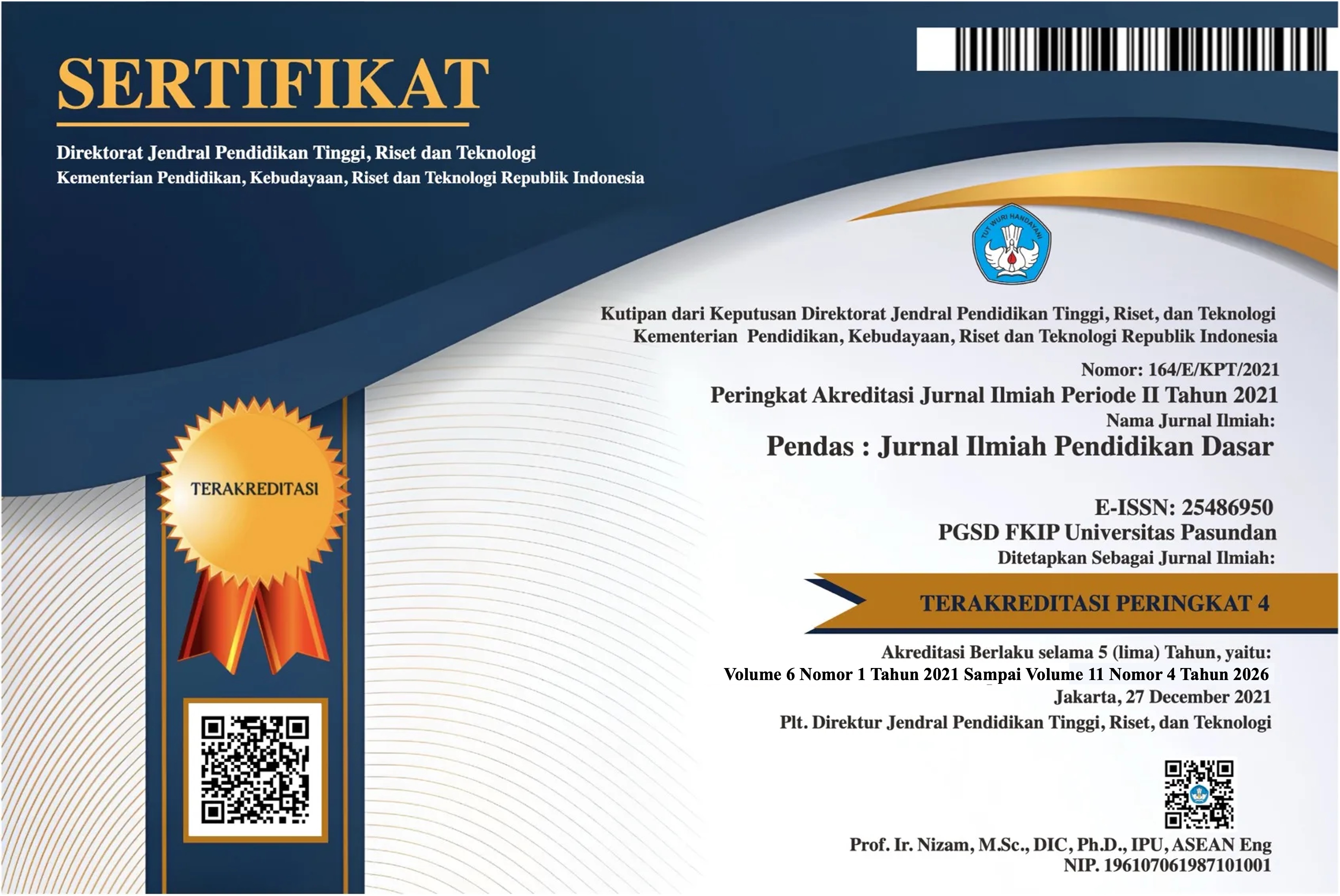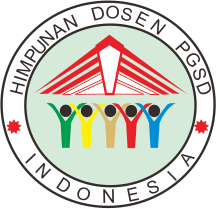OPTIMALISASI PENGGUNAAN MIND MAPPING DALAM MENINGKATKAN KREATIVITAS SISWA DI MADRASAH
DOI:
https://doi.org/10.23969/jp.v10i2.23833Keywords:
mind mapping method, student creativity.Abstract
Creative and innovative learning is key to enhancing students’ understanding of lesson materials. One effective method is mind mapping, which allows students to organize ideas visually and better comprehend complex concepts. This study aims to analyze the effectiveness of mind mapping in enhancing students’ creativity in the learning process. Additionally, it identifies the challenges and benefits students experience when applying this method in their learning activities. This research employs a qualitative approach using observation, interviews, and documentation methods. Observations were conducted to directly assess students’ activities in using mind mapping during lessons. Interviews were carried out with teachers and students to gain insights into the effectiveness of this method. Documentation was used as supplementary data collection, including students’ completed mind maps. The findings indicate that mind mapping enhances students' creativity in understanding lesson materials. Students become more active in developing new ideas and connecting previously learned concepts. Moreover, this method helps improve students’ memory retention as information is presented in an engaging visual format. However, some challenges were identified, such as time constraints in creating mind maps and certain students’ difficulties in organizing concept maps effectively. Therefore, further guidance from teachers is necessary to ensure students can fully utilize this method. In conclusion, mind mapping is an effective technique for fostering students’ creativity, though it requires adequate support and training for optimal implementation. As a recommendation, teachers should integrate mind mapping regularly into lessons and provide additional guidance to help students become more accustomed to and proficient in using this method.Downloads
References
Akfan, S. S. (2023). Utilizing Concept Maps to Enhance Student’s Writing Skills. JOLLT Journal of Languages and Language Teaching, 11(3), 433–446.
Alsharari, N. M., & Alshurideh, M. T. (2020). Student retention in higher education : the role of creativity , emotional intelligence and learner autonomy. Journal for the Education of Gifted Young Scientists, 89(4), 54–72. https://doi.org/10.1108/IJEM-12-2019-0421
Ananda, R. (2019). Penerapan Metode Mind Mapping untuk Meningkatkan Kemampuan Berpikir Kreatif Siswa Sekolah Dasar. Edukatif : Jurnal Ilmu Pendidikan, 1(1), 1–8.
Bogdan, R. (1982). Qualitative Research for Education. Allyn and Bacon.
Borg. (1979). Educational Research: An Introduction. Long Man.
Conradty, C. (2020). STEAM Teaching Professional Development Works : Effects on Students ’ Creativity and Motivation. Smart Learning Environments, 9(3), 112–132.
Dewanti, B. A. (2022). Comparing Student Creativity Skills in Experiment-Based and Project- Based Science Learning. Prisma Sains: Jurnal Pengkajian Ilmu Dan Pembelajaran Matematika Dan IPA IKIP Mataram, 10(3), 786–794.
Duncan, K. J. (2020). Examining the Effects of Immersive Game-Based Learning on Student Engagement and the Development of Collaboration , Communication , Creativity and Critical Thinking. Association for Educational Communications & Technology, 7(3), 76–82.
Fajri, Z., Baharun, H., Muali, C., Shofiatun, Farida, L., & Wahyuningtiyas, Y. (2021). Student’s Learning Motivation and Interest; the Effectiveness of Online Learning during COVID-19 Pandemic. Journal of Physics: Conference Series, 1899(1). https://doi.org/10.1088/1742-6596/1899/1/012178
Fajri Zaenol; Syaidatul Mukaroma. (2021). Pendidikan Akhlak Perspektif Al Ghazali Dalam Menanggulangi Less Moral Value. Edureligia; Jurnal Pendidikan Agama Islam, 5(1), 31–47. https://www.ejournal.unuja.ac.id/index.php/edureligia/article/view/1964
Frich, J., Vermeulen, L. M., Remy, C., & Biskjaer, M. M. (2019). Mapping the Landscape of Creativity Support Tools in HCI. CHI 2019 Paper, 4(9), 1–18. https://doi.org/10.1145/3290605.3300619
Hanif, S., Fany, A., Wijaya, C., & Winarno, N. (2019). Enhancing Students ’ Creativity through STEM Project-Based Learning. Journal Oof Science Learning, 2(January), 50–60. https://doi.org/10.17509/jsl.v2i2.13271
Henriksen, D., Richardson, C., & Shack, K. (2020). Since January 2020 Elsevier has created a COVID-19 resource centre with free information in English and Mandarin on the novel coronavirus COVID- 19 . The COVID-19 resource centre is hosted on Elsevier Connect , the company ’ s public news and information. ELSE (Elementary School Education Journal) : Jurnal Pendidikan Dan Pembelajaran Sekolah Dasar, 6(January), 88–102.
Kaplan, D. E. (2019). Creativity in Education : Teaching for Creativity Development. Scinece Research Publishing, 10(2), 140–147. https://doi.org/10.4236/psych.2019.102012
Kardoyo, Ahmad, N,. Muhsin, Hengky, P. (2022). Problem-Based Learning Strategy: Its Impact on Students’ Critical and Creative Thinking Skills. European Journal of Educational Research, 9(3), 1141–1150. https://doi.org/10.12973/eu-jer.9.3.1141
Kothari, C. . (2004). Research Methodology: Methods and Techniques (Second Rev). New Age International Publishers.
Lin, C., & Mubarok, H. (2021). Learning Analytics for Investigating the Mind Map-Guided AI Chatbot Approach in an EFL Flipped Speaking Classroom. Educational Technology & Society, 24(2), 16–35.
Linton, G., & Klinton, M. (2019). University Entrepreneurship Education : a Design Thinking Approach to Learning. Journal of Innovation and Entrepreneurship, 9(3), 54–71.
Lutfiah, I., & Suharti, P. (2021). Improving Students ’ Creative Thinking Skills through the IBSC ( Investigation Based Scientific Collaborative ) Learning Model Based on E-Learning Meningkatkan Keterampilan Berpikir Siswa melalui Model Pembelajaran IBSC ( Investigation Based Scientific Co. Research Paper, 5(2), 85–98. https://doi.org/10.21070/sej.v5i2.1572
Mkrtychian, N., Blagovechtchenski, E., & Kurmakaeva, D. (2019). Concrete vs . Abstract Semantics : From Mental Representations to Functional Brain Mapping. Frontiers in Education, 13(August), 1–6. https://doi.org/10.3389/fnhum.2019.00267
Mursid, R., & The, R. (2022). The Effect of the Blended Project-based Learning Model and Creative Thinking Ability on Engineering Students ’ Learning Outcomes. IJE, 8(3), 1–17.
Novak, A. O. and J. D. (2018). Knowledge Cartography for Young Thinkers Sustainability Issues , Mapping Techniques and AI Tools (U. of T. S. Lakhmi Jain (ed.); 3rd ed.). Springer Briefs.
Nugroho, A. A. (2023). Exploring students ’ creative thinking in the use of representations in solving mathematical problems based on cognitive style. Mathematic Education Journal, 82(4), 45–63.
Oktavia, S. N., Tanjung, A., & Irawan, L. Y. (2021). Atmospheric learning : Pengembangan digital mind maps berbantuan mind mapping software untuk siswa Geografi. Jurnal Integrasi Dan Harmoni Inovatif Ilmu-Ilmu Sosial (JIHI3S), 1(3), 301–310. https://doi.org/10.17977/um063v1i3p301-310
Ozkan, G., & Umdu, U. (2021). Exploring the effectiveness of STEAM design processes on middle school students ’ creativity. International Journal of Technology and Design Education, 31(1), 95–116. https://doi.org/10.1007/s10798-019-09547-z
Patternsstudent, C. T., & Works, S. (2019). Creative Thinking Patterns In Student‘s Scientific Works. Eurasian Journal of Educational Research, 81(4), 21–36. https://doi.org/10.14689/ejer.2019.81.2
Quintanilla, S. G., Everaert, P., Chiluiza, K., & Valcke, M. (2023). Impact of Design Thinking in Higher Education : a Multi ‑ actor Perspective on Problem Solving and Creativity. International Journal of Technology and Design Education, 33(1), 217–240. https://doi.org/10.1007/s10798-021-09724-z
Siburian, J. (2019). The Correlation Between Critical and Creative Thinking Skills on Cognitive Learning Results. International Journal of Academic Research in Business and Social Sciences, 81(3), 99–114. https://doi.org/10.14689/ejer.2019.81.6
Sidharth, K. A., & Vinodini, M. (2021). Technological Forecasting & Social Change Participatory design approach to address water crisis in the village of. Technological Forecasting & Social Change, 172(6), 1–15. https://doi.org/10.1016/j.techfore.2021.121002
Solfitri, T,. Hesty M S, . Kartini & Ariya P. (2024). Facilitating Mathematical Creative Thinking Ability : Analysis of Validation, Practicality, and Effectifeness of Learning Modules. Jurnal Pendidikan Progresif, 14(01), 619–634. https://doi.org/10.23960/jpp.v14.i1.202445
Sotiriou, S. A., & Bogner, F. X. (2020). education sciences How Creativity in STEAM Modules Intervenes with Self-E ffi cacy and Motivation. Education Sciences, 65(3), 1–15.
Sun, M., Wang, M., & Wegerif, R. (2020). Effects of divergent thinking training on students ’ scientific creativity : The impact of individual creative potential and domain knowledge. International Conseling and Education Seminar, 76(5), 1–15.
Supena, I., & Hariyadi, A. (2021). The Influence of 4C ( Constructive , Critical , Creativity , Collaborative ) Learning Model on Students ’ Learning Outcomes. International Journal of Instruction, 14(3), 873–892.
Sutrisno, H. (1991). Metodologi Research. Andi Offset.
Tambunan, H. (2019). The Effectiveness of the Problem Solving Strategy and the Scientific Approach to Students ’ Mathematical Capabilities in High Order Thinking Skills. INTERNATIONAL ELECTRONIC JOURNAL OF MATHEMATICS EDUCATION, 14(2), 293–302.
Tanjungpura, U., Wijayakusuma, U., & Subang, U. (2023). The Effect of Entrepreneurship Education and Creativity on Students’ Entrepreneurial Intention : The Perspective of Effectuation and Cognitive Flexibility Theory. Jurnal Kependidikan: Jurnal Hasil Penelitian Dan Kajian Kepustakaan Di Bidang Pendidikan, Pengajaran Dan Pembelajaran, 9(2), 555–569.
Tatipang, D. P., Oroh, E. Z., & Liando, N. V. F. (2019). The Application of Mind Mapping Technique to Increase Students ’ Reading Comprehension at the Seventh Grade of SMP. Journal for the Education of Gifted Young Scientists, 87(5), 34–51.
Tomas, L., Evans, N. S., Doyle, T., & Skamp, K. (2019). Are first year students ready for a flipped classroom? A case for a flipped learning continuum. Interactive Learning Environments, 4(3), 125–143.
Utomo, D. H., Malang, U. N., & Aceh, B. (2018). Increasing Students Critical Thinking Skills and Learning Motivation Using Inquiry Mind Map. Journal for the Education of Gifted Young Scientists, 8(3), 4–19.
Wahab, I., & Astri, Z. (2022). Students ’ Interest in Using Semantic Mapping Technique in Learning English Writing Ability. International Education Studies,
Downloads
Published
Issue
Section
License
Copyright (c) 2025 Pendas : Jurnal Ilmiah Pendidikan Dasar

This work is licensed under a Creative Commons Attribution 4.0 International License.



















